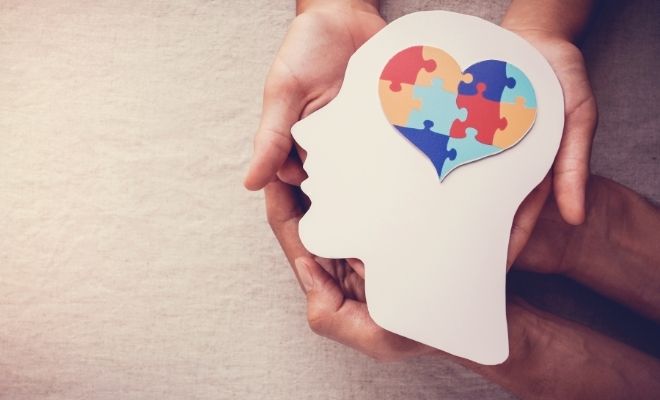Autism, also called Autism Spectrum Disorder (ASD), encompasses a series of neurodevelopmental disorders whose main characteristics are: difficulties in social interaction and communication, repetitive and stereotyped behaviors, and restricted interests.
Autism manifests itself in childhood, in the first years of life, although it is sometimes detected late. It is a chronic disorder and therefore if there is autism in children there is also autism in adults.
A lack of diagnosis in adults can lead to inadequate treatment and repeat referrals. For this reason, it is important to make a good diagnosis and offer, from the health system, a personalized treatment that covers the areas in which the person needs support.
Characteristics and difficulties of autism in adults
- First of all, it is important to make it clear that autism does not define a single way of being, but rather encompasses a series of disorders with common characteristics. However, the presentation of the symptoms varies greatly from one person to another; That is why we speak of a spectrum and why people with autism are so different from each other.
- On the other hand, the affectation will also be very different in each case, including mild, moderate and severe cases.
- As in children, the most remarkable difficulties of autism in adults are those that arise in the social and communicative sphere.
- Social difficulties affect them in the social area but also at work. Thus, although each person is different (regardless of whether or not they have a diagnosis), the truth is that, in general, adults with autism may find it difficult to make friends and keep them. Friendliness can also be lacking.
- In the workplace they may also have adaptation problems, mainly due to a poor understanding of social situations. This can be accentuated if a good accompaniment is not carried out or if the necessary support for the person is not offered. On the other hand, due to the difficulties of the individual, communication problems can arise that cause misunderstandings and uncomfortable situations. This can lead to losing friends.
- Continuing with communication, they have difficulties understanding irony or double meanings, capturing sarcasm or lying. In this sense, they are very honest people, but sometimes that honesty can create problems for them, being so direct.
Treatment of autism in adults: do they ask for help?
- It is important, in people with autism, to offer appropriate treatment for each specific case (taking into account their characteristics and age). The “ideal” treatment is multidisciplinary treatment, that is, one that includes different types of professionals: psychologists, physiotherapists, neuropsychologists, occupational therapists…
- This is especially relevant in childhood, because in adulthood, the help that is usually used is that focused on psychotherapy.
- But do adults with autism ask for help? It depends a lot on the symptoms and the level of interference! Because that conditions the fact of becoming aware of them or not (those with mild autism can lead a normal life all their lives without needing to ask for help).
- On the other hand, many times adults with autism do not know very well what treatment to follow because, in fact, they are not even diagnosed. Normally they are adults who all their lives have noticed that they did not fit in, that they were different or that “something” was not right.
- They may be people who consult for their own motivation on suspicion of having autism, who usually have previously investigated their symptoms. They may recognize difficulties in themselves or that a close relative has been diagnosed with autism (for example, a child). People who consult do so because the symptoms truly interfere with their well-being, otherwise they rarely consult. This is why many adults with autism, with mild symptoms (or with high-functioning autism), never seek help and are never diagnosed. They spend childhood and adolescence in their own way, adapting to life.
The importance of diagnosis
But in order to offer the appropriate treatment, a good diagnosis should be made. For this, an exhaustive and detailed evaluation of the patient must be carried out. The diagnosis of autism is based solely on the patient’s symptoms (symptoms, behaviors…), because there is no test that 100% determines its existence. There are, of course, standardized tests for their evaluation, together with the professional’s judgment.
Can adults with autism lead independent lives?
- Does autism in adults allow independent living? Logically, it depends on each case. According to a study carried out by María Elisa Irarrázaval and collaborators, published in 2005 in the Chilean Journal Neuro-psiquiatría, the follow-up studies carried out to date suggest that only a small percentage of autistic people manage to live and work autonomously in adulthood.
- About a third of cases achieve some degree of partial independence. According to the same study, in adult autism, people who function at a higher level continue to have difficulties in the typical areas of autism: social interaction and communication, and restricted interests and activities.
- Logically, these difficulties are less if the degree of autism is also lower, so the probability that these people live independently depends in part on this level of affectation.
- This independence in adult life also depends on other variables, such as the search for help and support (at a psychological, family and social level), diagnosis and treatment (at what age did it start, for example), personality, personal resources etc.
- Finally, when there is an intellectual disability associated with autism, independent living becomes even more complicated. Relatedly, a 2019 analysis showed that in 301 autism studies, only 6% of participants had intellectual disability (in people without autism), compared to 30% in people with autism.
- However, other studies estimate much higher figures, and speak of the presence of intellectual disability (mild, moderate or severe) in 75% of people with autism.
Myths about autism and autism in adults
- Do we really know what autism is? In order to properly normalize and make autism visible in adults, but also in children, it is important to know (and dismantle) the myths that surround this neurodevelopmental disorder. Among the most widespread we find:
- Autism is a disease: False. It is a condition, a disorder of neurobiological origin that is related to the development of the central nervous system.
- Autism is cured: False. As it is not a disease, we cannot speak of a cure. Furthermore, it is a chronic disorder.
- There are more men than women with ASD: True/False. This is what was believed to date, although there could be an underdiagnosis of women with ASD.
- People with ASD avoid contact with others: False. Some look for it but don’t know how to manage it due to lack of skills or social anxiety.
- All people with ASD are the same: False. Although they may share characteristics, they are just as different from each other as two people without autism.
Final Thought: Autism in Adults
- Autism is a neurodevelopmental disorder in which symptoms appear in childhood. That is why the disorder is usually diagnosed at this evolutionary stage; however, if the symptoms are mild (or in people with high-functioning autism, such as those with Asperger’s syndrome), the diagnosis may or may not come or may come many years later (in adulthood).
- The symptoms of autism in adults are the same as in childhood autism, because it is the same disorder. However, in adulthood, it is likely that the person has been able to develop more coping strategies and that they have more resources that allow them to compensate for their difficulties, mainly social and communicative.
- This will also depend on whether or not you have received treatment during your life and how you have built your life. It will also depend, to a large extent, on whether the person also has an associated intellectual disability; in these cases, autism is usually detected much earlier, because the difficulties are more evident.
